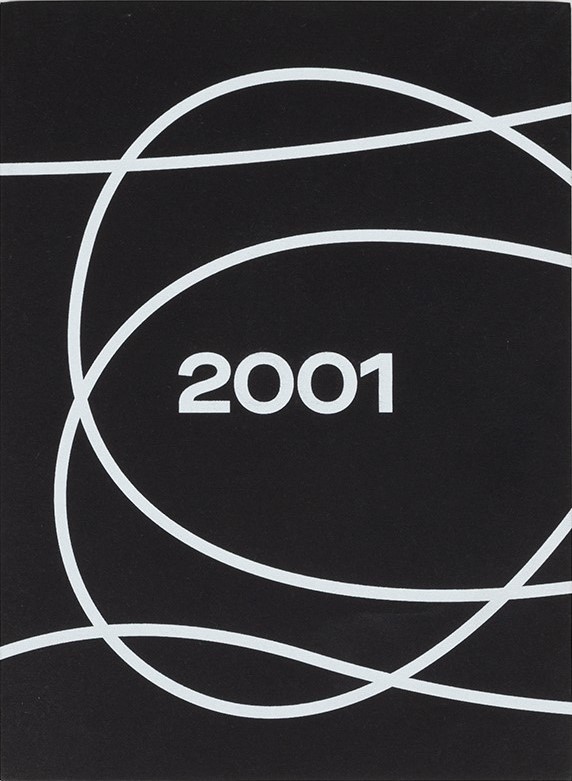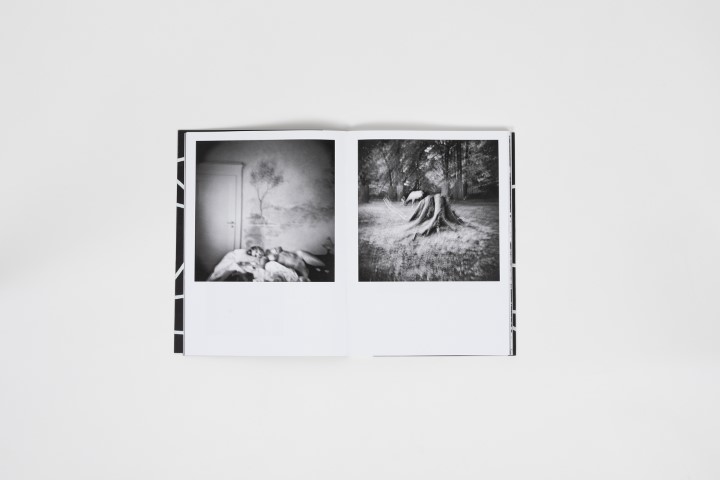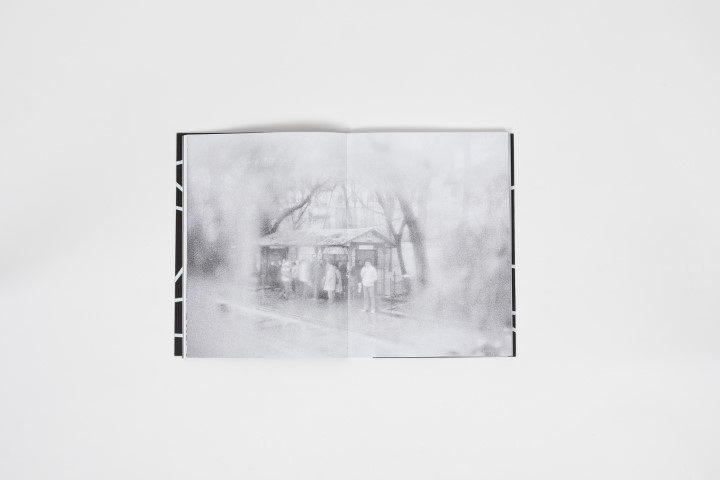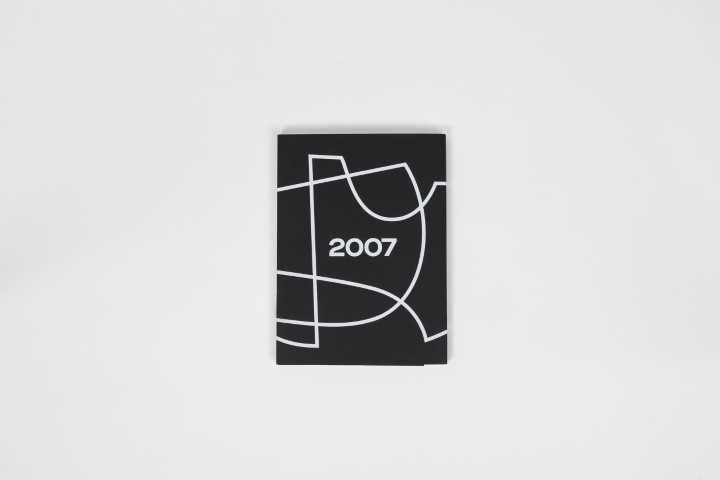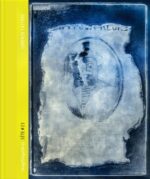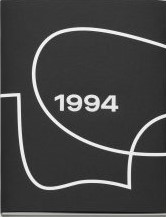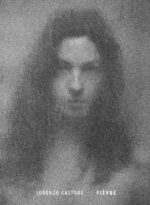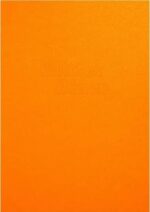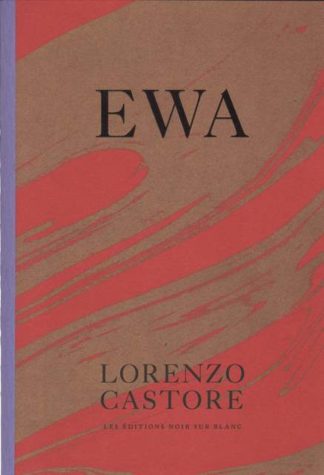« En 2001, je vivais à Rome et je ne savais pas vraiment vers qui me tourner. J’avais 27 ans et je faisais de la photographie à ma façon depuis un certain temps déjà, mais je ne savais pas comment cela pouvait se transformer en quelque chose de plus concret. Entre-temps, j’essayais d’acquérir de l’expérience, de gagner un peu d’argent de toutes les façons possibles et d’améliorer ma technique. Je me rendais régulièrement en Silésie, en Pologne, et j’y passais de longues périodes. J’étais inquiet pour l’avenir, et le désir de changement me poussait ailleurs, alors j’ai décidé de déménager à Milan.
Je cherchais un emploi, un point de départ, pour mon identité dans le monde adulte. J’étais déchiré entre ce que ma tête disait et les suggestions faites par la voix interne avec laquelle j’ai toujours eu un dialogue intense : elle me parle et me guide, et souvent certaines des suggestions sont assez effrayantes parce qu’elles ont peu à voir avec la rationalité. Je pensais qu’il était presque impossible de vivre de la photographie selon mes propres termes, mais je voulais essayer et je n’avais pas de meilleures idées. L’ambition de la liberté expressive absolue s’est heurtée à un certain sentiment de modestie qui m’empêchait de montrer, sans filtres, ma photographie parce que je craignais qu’elle puisse effrayer ceux qui auraient pu me commander pour un travail éditorial, Le montage de mes photos était très compliqué. Je n’avais pas de repères en chair et en os, je m’étais formé à travers la musique et les livres, mais je n’avais pas encore rencontré un photographe avec qui je pouvais partager une direction et une vision.
Un ami m’a parlé avec insistance de Michael Ackerman, me disant que je devrais absolument le rencontrer. Son travail m’a étonné pour la force émotive des images et parce qu’il parlait de mon besoin de radicalisme et d’expérimentation. Cette approche m’a interpellé, mais il le faisait avec un courage que je n’avais toujours pas au fond. L’esthétique de cette photographie en soi n’était pas ce qui me touchait autant que l’énergie qu’elle transmettait. Je l’aimais bien sûr, mais ce n’était pas le principal, car il était clair dès le départ que j’étais à la recherche de ma propre voie, et que je la trouverais à travers un chemin que je devais explorer par moi-même. Le hasard sur ce type de liberté expressive était excitant et apportait un grand confort ; c’était quelque chose que je racontais. J’avais cependant des émotions contradictoires. Je ressentais de l’envie, entre autres. Ackerman avait surtout travaillé à New York et en Inde — les deux endroits où j’avais commencé ma liaison avec la photographie — et il l’avait fait en premier, il l’avait fait plus souvent et mieux que moi. Nous nous sommes rencontrés à son exposition à Milan, et j’ai découvert qu’il venait de se rendre en Silésie, exactement là où je travaillais régulièrement depuis quelques années. Encore une fois mes places… Avec un mélange de curiosité et d’agacement, je suis allé vers lui. Sur l’écran, il y avait une photo d’une fille semi-nue assise sur un lit. Vous ne pouviez pas voir qui elle était, l’image était très floue, mais j’ai semblé reconnaître Justyna, la jeune Polonaise avec qui j’avais récemment une relation torturante. En suivant quelques pistes de réflexion, je suis monté à Ackerman avec une attitude distante et provocante. Je l’ai félicité pour son travail, puis je lui ai immédiatement demandé qui était la fille sur la photo. Il a répondu fermement : « Je ne vous le dirai pas. » Après avoir insisté en vain, je me suis éloigné irrité et je me suis tenu sur le côté, me sentant amer. Vers la fin de la soirée, quand les gens ont commencé à partir, Michael est venu me voir et m’a dit : « Au fait, c’est un homme. » Après un moment d’incrédulité, nous avons tous les deux éclaté de rire. Pendant un bref instant, j’ai eu l’impression que cette rencontre avait des racines profondes et lointaines dans le temps, mais immédiatement oubliées. Nous nous sommes arrangés pour nous rencontrer en Pologne où nous avons commencé à traîner souvent, liés par une chimie spéciale, des goûts semblables et un sens de l’humour similaire. Michael me transmettait quelque chose de familier, que je reconnaissais immédiatement et clairement sans pouvoir dire ce que c’était. On est devenus amis, de plus en plus.
Pendant ce temps, je voulais essayer d’utiliser la couleur d’une nouvelle manière, comme je l’avais déjà expérimenté. J’ai continué à penser à une photo d’un sadhu que j’avais tourné en Inde, par accident et par chance, en 1997. Certains m’avaient parlé de la lumière jaune des lampadaires dans les rues de La Havane : cette caractéristique avait stimulé mon imagination, et j’ai décidé d’aller la voir. Après deux voyages, les couleurs et la lumière nocturne, ainsi qu’une énergie finalement libérée, ont donné vie à une œuvre puissante qui m’a soudainement ouvert des perspectives imprévues. Bientôt j’ai eu le sentiment que j’aurais pu continuer à prendre des photos de cette façon pour toujours. J’avais compris comment cela fonctionnait avec la couleur de la nuit. Cependant j’ai eu alors une sorte de refus irrationnel, et j’ai arrêté de travailler en couleur. Faire cela n’était pas une décision d’adulte, mais dans un certain sens une décision enfantine : Je pensais que ma valeur devait être déterminée par de vrais choix artistiques qui ne peuvent pas être décidés de manière astucieuse, mais se produisent différemment, suivant l’intuition et la culture d’une honnêteté limpide. Je le pense toujours, et je ne sais pas vraiment si c’est une bonne ou une mauvaise chose. Le refus de la couleur était une façon de préserver l’intégrité, mais aussi une évasion. Le courage et la stupidité que j’avais ont créé des perspectives plus difficiles et plus complexes, cependant, il a gardé la route ouverte, pas la plus facile mais celle que je voulais prendre.
Au début de 2003, j’ai passé beaucoup de temps à Florence avec mon père, qui avait été opéré d’une tumeur à la gorge. Notre relation n’était pas grande à l’époque, mais cette expérience avait créé une immense tendresse et nous avait permis de renforcer notre lien. J’étais avec lui à l’hôpital, puis à la maison pendant un certain temps après. Puis, rongé par la perte de sa voix et fatigué du silence chronique de notre communication chancelante, j’ai accepté une résidence à Sulcis, au sud-ouest de la Sardaigne qui m’a tenu occupé pendant les deux années suivantes. J’ai décidé de ne prendre des photos qu’en noir et blanc, dans des paysages minimalistes et avec très peu de gens — des mineurs surtout sous terre, éclairés uniquement par la lumière de mon casque.
Alors j’ai partagé mon temps entre Milan, Cracovie, Paris, et tout ce qui était autour de là et entre les deux, puis Rome où je retournais pour trouver ma mère et mes vieux amis, qui n’avaient jamais cessé d’être mon Northern Star. Je prenais des photos partout et chaque jour de plus en plus, sans avoir le souci d’avoir un projet précis. J’avais toujours mon appareil photo en main. Je voyageais autant que possible. Je fourrais mon nez partout. J’avais des énergies inépuisables, faim de rencontres, faim de tout. J’essayais de me confronter à l’histoire — le passé et le présent, celui de tout le monde et le mien — à travers une ouverture totale à ce que la vie me lançait. Malgré cela, je souffrais d’un sentiment général d’insuffisance ; aucun de mes efforts n’a jamais semblé suffisant. Je savais que je devais encore m’améliorer dans tout, pas seulement en tant que photographe, surtout pas en tant que photographe. Avoir la tête baissée et me concentrer sur mon travail était un soulagement parce que c’était comme ça que j’arrivais à m’oublier et à calmer mon désir toujours inassouvi. Mais pour quoi ?
Pendant ces années, Michael Ackerman et Anders Petersen étaient les photographes dont j’étais le plus proche, d’une manière très différente. Traîner avec eux m’a fait grandir, mais aussi me faire sentir petit et confus. Ceux qui décident de s’exprimer à travers un style artistique et ont l’urgence de communiquer en s’interrogeant sur le mystérieux : s’ils n’expérimentent pas, s’ils ne prennent pas de risques, s’ils ne prennent pas leur temps quand ils devraient le faire, ils perdent le sens primaire de leur travail et le caractère unique de leur touche magique. Je cherche quelque chose que je ne sais pas, sans savoir comment le faire : c’est un processus complexe qui exige foi et dévouement parce qu’il y a des moments difficiles dans cette avancée dans l’obscurité, et il est vital d’avoir un point de référence. J’étais cette personne non guérie, non mûre, stimulée par des influences charismatiques. Ce dernier consistait à me nourrir d’idées et d’exemples, à reconnaître les compagnons d’un voyage et à leur rendre hommage. Dans les années précédentes, mes professeurs étaient tous dans les livres, et donc loin, c’était leur travail qui me parlait, et c’est probablement ce qui compte le plus. Puis, j’eus la chance de prendre contact avec certains de ceux qui m’avaient inspiré, excité, ouvert mon cœur et mon esprit, et j’admirais en eux la vitalité incandescente ainsi que leurs faiblesses et contradictions. Cela m’a réchauffé à l’intérieur et m’a donné confiance parce que là j’ai vu l’origine de la beauté.
Je cherchais donc, anxieusement mais sans résultats dignes, à donner ordre et forme à tout mon travail en noir et blanc tourné partout où je me trouvais jusqu’alors. Plusieurs fois j’avais changé le titre d’une œuvre qui continuait à s’étendre de manière anarchique. Souvent, quand vous n’avez pas de titre, vous n’avez même pas une idée claire de ce que vous voulez vraiment faire. Le titre est la synthèse maximale, un synopsis dépouillé, plus ou moins poétique. Au lieu de cela, mes titres mal choisis et artificiels étaient des tentatives de se rapprocher de quelque chose mais sans vraiment réussir à dire ce que je faisais. J’étais impatient, avec un besoin inutile de circonscrire et un désir très confus de trouver ou d’avoir du sens. C’est l’œuvre que je porte, l’histoire d’une vie qui dans ces volumes prend enfin sa forme la plus naturelle.
La phrase de l’épigraphe d’Edgar Allen Poe est extraite de l’une de mes histoires préférées de son « L’homme de la foule », où le narrateur raconte la poursuite autour de la ville d’une figure qu’ils ne sont jamais en mesure d’atteindre. Ils continuent à le poursuivre, à suivre cette silhouette sombre qu’ils ne parviennent jamais à identifier. C’est une histoire troublante qui se rapporte à quelque chose qui m’est arrivé. A New York, au début des années 90, j’ai suivi longuement dans les rues de la ville une étrange figure d’un petit homme habillé de la tête aux pieds en noir. Il avait un chapeau noir qui cachait presque complètement son visage, et il portait avec lui un gros sac, également noir. J’essayais de le photographier de toutes les façons possibles, mais sans jamais y arriver. Il se déplaçait rapidement et m’échappait continuellement. Je courais devant lui pour l’anticiper, mais ses mouvements étaient trop rapides, et puis, en désespoir de cause, j’ai commencé à le photographier en déplaçant la caméra, essayant de suivre son mouvement. J’avais vingt ans. Quand j’ai développé le film il y avait une seule photo accidentelle qui a immédiatement sauté devant moi ; elle a déçu mes attentes rationnelles mais a excité mes émotions et inconscients. L’énergie de l’intention hors de contrôle dans la résistance constante et le conflit avec son opposé m’a inspiré à explorer les possibilités jamais considérées jusqu’à ce point. Cette réalité de suivre quelque chose que vous n’êtes pas vraiment capable de capturer, dans la foule, est essentielle à ma passion pour la photographie. Cette illusion de se rapprocher, cette surprise quand tout semble perdu. Le frisson de l’inattendu, la tentation de mettre le feu à tout cela.
Les années dont il est question dans ce volume sont celles d’une grande quantité de photographie — trop, même inutile. Pris partout, dans la rue, dans les chambres, dans les bars, dans les trains, avec des étrangers, avec des amis. Années obsessionnelles guidées par des forces invisibles, à l’intérieur et à l’extérieur de moi. Nous ne savons rien. » -Lorenzo Castore
“In 2001, I was living in Rome and didn’t really know where to turn. I was 27 years old and I had been doing photography in my own way for some time already, but I wasn’t sure how it could turn into something more concrete. In the meantime, I was trying to gain experience, earn a bit of cash in any way possible, and improve my technique. I was going to Silesia in Poland regularly and spent long periods there. I was worried about the future, and the desire for change was pushing me elsewhere, so, I decided to move to Milan.
I was looking for a job, a starting point, for my identity in the adult world. I was torn between what my head was saying and the suggestions being made by the internal voice that I’ve always had an intense dialogue with: it talks to and guides me, and often some of the suggestions are quite scary because they have little to do with rationality. I used to think it was almost impossible to make a living out of photography on my own terms, but I wanted to try and didn’t have any better ideas. The ambition of absolute expressive freedom clashed with a certain sense of modesty that was restraining me from showing, without filters, my photography because I feared it could scare those who might have commissioned me for editorial work, and so editing my pictures was very complicated at that time. I didn’t have reference points in flesh and blood, I had formed myself through music and books, but I had not yet met a photographer with whom I could share a direction and a vision.
A friend talked to me insistently about Michael Ackerman, saying that I would absolutely have to meet him. His work astonished me for the emotive force of the pictures and because he was speaking to my need for radicalism and experimentation. That approach resonated with me, but he was doing it with a courage that I still did not have to the very core. The aesthetic of that photography in itself was not what was moving me as much as it was the energy that it was transmitting. I liked it of course, but it was not the main thing, as it was clear from the start that I was on the hunt for my own way, and that I would find it through a path that I had to explore on my own. To chance upon that type of expressive freedom was exciting and brought great comfort; it was something that I related to. I had, however, conflicting emotions. I felt envy, among other things. Ackerman had mostly worked in New York and India — the two places where I had started my affair with photography — and he had done it first, done more of it, and done it better than me. We met at his exhibition in Milan, and I discovered that he had just been to Silesia, exactly where for a couple of years I had been working regularly. Again my places… With a mixture of curiosity and annoyance, I went up to him. On display, there was a photo of a seminude girl sitting on a bed. You couldn’t see who she was, the image was very blurred, but I seemed to recognise Justyna, the Polish girl with whom I had recently a torturous relationship. Following some rambling trains of thought, I went up to Ackerman with an attitude that was standoffish and defiant. I complimented him for his work only to then immediately ask him who the girl was in that photo. He responded, steadfast: “I won’t tell you.” After insisting in vain, I moved away irritated and stood on the side, feeling bitter. Towards the end of the evening, when people started to leave, Michael came up to me and said: “By the way, she is a man.” After a moment of disbelief, we both burst into laughter. For a brief moment, I had the impression that this meeting had roots that went deep and far away in time, but immediately forgot about it. We arranged to meet in Poland where we began hanging out often, tied together by a special chemistry, kindred tastes, and a similar sense of humour. Michael was transmitting something to me that was familiar, which I recognised immediately and clearly without being able to say what it was. We got each other and we became friends, more and more.
Meanwhile, I wanted to try and use colour in a new way, as I had been experimenting with already. I continued to think about a photograph of a sadhu I had shot in India, by accident and by luck, in 1997. Some people had told me about the yellow light of the lampposts on the streets of Havana: this characteristic had stimulated my imagination, and I decided to go and see it. After two trips, the colours and the nocturnal light, together with an energy finally liberated, gave life to a powerful work that suddenly opened to me unforeseen perspectives. Soon I had the feeling I could have continued taking photos in that way forever. I had figured out how it worked with the colour of the night. However I then had a kind of irrational refusal, and I stopped working in colour. Doing this wasn’t an adult decision but in a certain sense a childish one: I used to think that my worth had to be determined by true artistic choices that can’t be decided in a shrewd way but occur differently, following intuition and the cultivation of a crystal-clear honesty. I still think this, and I don’t really know if it is a good thing or a bad thing. The refusal of colour was a way of preserving integrity, but also it was an escape. The courage and the stupidity that I had, created more difficult and intricate perspectives, however, it kept the road open, not the easiest one but the one that I wanted to take.
At the beginning of 2003, I spent a lot of time in Florence with my father, who had been operated on for a bad tumour in his throat. Our relationship wasn’t much at the time, but this experience had created an enormous tenderness and had allowed us to strengthen our bond. I was with him in hospital, and then at home for some time after. Then, hollowed by the loss of his voice and weary from the chronic silence of our faltering communication, I accepted a residence in Sulcis, South-West Sardinia that kept me busy for the next two years. I decided to take photos only in black and white, minimal landscapes and very few people — miners underground mostly, illuminated only by the light from my helmet.
So I split my time between Milan, Cracow, Paris, and everything that was around there and in between, and then Rome where I was going back to find my mother and my old friends, who had never stopped being my Northern Star. I was taking photos everywhere and every day more and more, without the worry of having a clear-cut project. I always had my camera in hand. I was traveling as much as possible. I was sticking my nose in everywhere. I had inexhaustible energies, hunger for encounters, hunger for everything. I was trying to confront myself with history — the past and the present, that of everyone and that of mine — through a total openess to what life was throwing at me. Despite this, I was suffering from a general sense of inadequacy; none of my efforts ever seemed enough. I knew I still had to improve a lot in everything, not only as a photographer, especially not as a photographer. To get my head down and concentrate on work was a relief because this was how I was managing to forget about myself and calm my ever unsatiated desire. But for what?
In those years, Michael Ackerman and Anders Petersen were the photographers I was closest to, in ways that were very different. Hanging out with them made me grow but also made me feel small and confused. Those who decide to express themselves through an artistic style and have the urgency to communicate by interrogating themselves about the mysterious: if they don’t experiment, if they don’t take risks, if they don’t take their time when they should take it, they lose the primary sense of their work and the uniqueness of their magic touch. I search for something that I don’t know, without knowing how to do it: it is a complex process that requires faith and dedication because there are difficult moments in this advancing in the dark, and it is vital to have some point of reference. I was this unsecure, unripe self stimulated by charismatic influences. The latter consisted of feeding myself on ideas and examples, of recognising the companions on a journey and paying tribute. In the preceding years, my teachers were all inside books, and therefore far away, it was their work that spoke to me, and this is probably what counts the most. Then, I had the fortune of making contact with some of those who had inspired me, excited me, opened my heart and mind, and I admired in them the incandescent vitality together with their weaknesses and contradictions. This warmed me inside and gave me confidence because there I saw the origin of beauty.
So I was seeking, anxiously but without worthy results, to give order and shape to all of my work in black and white shot everywhere that I found myself until that point. Many times I had changed the title of a body of work that continued to expand itself in an anarchic way. Often when you don’t have a title you don’t even have a clear idea of what you want to truly do. The title is the maximum synthesis, a bare-bones synopsis, more or less poetic. Instead, my ill-chosen and contrived titles were attempts to move closer to something but without truly managing to say what I was doing. I was impatient, with a useless need to circumscribe and a much-confused desire to find or have sense. This is the work that I carry, the history of a life that in these volumes is finally taking its most natural form.
The sentence in the epigraph from Edgar Allen Poe is excerpted from one of my favourite stories of his ‘The Man of the Crowd,’ where the narrator recounts the pursuit around the city of a figure that they are never able to reach. They continue to go after him, to follow this dark silhouette that they never manage to identify. It is an unsettling story that relates to something that happened to me. In New York, at the beginning of the 90s, I followed at length around the city streets a strange figure of a small man dressed head to toe in black. He had a black hat that was almost completely hiding his face, and he was carrying with him a big bag, also black. I was trying to photograph him in any way possible but without ever managing to. He was moving quickly and continually eluded me. I would run in front of him to anticipate him, but his movements were too quick, and then, in desperation, I began to photograph him while moving the camera, trying to follow his movement. I was twenty years old. When I developed the film there was a single accidental photo that immediately jumped out in front of me; it disappointed my rational expectations but excited my emotional and unconscious ones. The energy of the out-of-control intention in constant resistance and conflict with its opposite inspired me to explore opportunities never considered until that point. This reality of following something that you are not truly able to capture, in the crowd, is essential to my passion for photography. That illusion of getting closer, that surprise when all seems lost. The thrill of the unexpected, the temptation to set fire to it all.
The years spoken about in this volume were those of a great deal of photography — too much, useless even. Taken everywhere, in the street, in rooms, in bars, on trains, with strangers, with friends. Obsessive years guided by invisible forces, inside and outside of me. We know nothing.” -Lorenzo Castore

